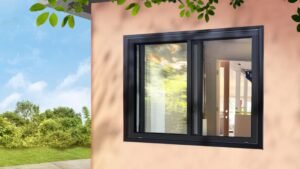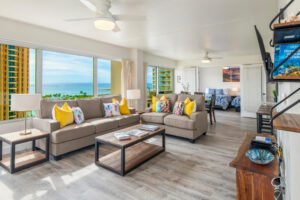
From the olden days, timbers have been crucial in constructing houses, showing when people started living in permanent homes instead of tents. Even though humans now have access to more advanced materials, timber buildings are still well-liked everywhere. The demand for good quality wood is going up around the world. More than 70% of all first-world countries’ residents live in houses made partly out of timber frames. In the United States, there are very few tall timber buildings; however, timber frame structures are used in 90% of short buildings like houses. More and more, people who build houses professionally are using prefabricated timber frames because they go up quickly and offer several other benefits as well. This means that timbers can be used for lots of different kinds of building – something which some experts think will become even more true as time goes on. It also shows how people are beginning to understand what makes timber special when it is used in modern construction (especially those having to do with sustainability).
Exploring Timber Framing: A Time-Honored Craft
Timber framing is a traditional building method that uses heavy timber to construct framed structures. Its reliance on wooden pegs or mortise and tenon joints instead of nails or adhesives sets it apart from other techniques.
Timber framing boasts a rich history dating back centuries. From ancient temples to medieval castles, many enduring landmarks were crafted using this method. The Horyuji Temple in Japan, the world’s oldest wooden building at 1,300 years old, stands as a testament to the longevity of timber framing.
While timber framing saw a decline in popularity in the mid-decades, it has recently experienced a resurgence. Increasingly, people are choosing timber-frame homes over modern alternatives for their timeless appeal and sustainable benefits.
Advantages of Timber Frame Homes

Hamill Creek timber frame homes continue to captivate homeowners for their innovative and customizable designs:
Durability and Design Flexibility
The longevity of timber frame structures is remarkable. Historical examples underscore their ability to resist decay and withstand insect damage, thanks to the robustness of large, dense timbers used in their construction.
Timber’s versatility extends to its aesthetic appeal and adaptability in construction. Timber frames in various species facilitate diverse architectural styles and interior designs. Their load-bearing capabilities allow for easy modifications to floor plans without compromising structural integrity. Here are some popular design ideas:
- Lakeside Cabin: Ideal for those seeking tranquility by the water, with timber features that blend harmoniously with natural surroundings.
- Modern Mansion: Combines luxury and sustainability with sleek timber frames and modern amenities.
- Cozy English Manor: Reflects the charm of traditional English architecture, featuring timber-framed ceilings and classic comforts.
- Classic Country Ranch: Offers spacious living amidst nature, perfect for those desiring privacy and a rustic lifestyle.
- Barndominium: A blend of barn aesthetics and modern living, often featuring timber frames for a unique, versatile living space.
Superior Thermal Insulation Properties
Timbers’ natural insulation properties from air pockets within their cellular structure ensure consistent indoor temperatures year-round. Timber frame structures integrate structural elements with thermal insulation in a slender wall profile, achieving excellent U values. This integration results in thinner walls, optimizing usable floor area and reducing material costs. A vapor control layer ensures exceptional airtightness, reducing reliance on heating and cooling systems for environmental and economic benefits.
Sound Insulation: Acoustic Excellence
Timber frame party walls provide exceptional acoustic performance by effectively isolating sound transmission. Similar to separate buildings, the inherent gap between semi-detached houses constructed with timber frames minimizes sound pathways. Insulation and plasterboard further dampen and absorb sound, contributing to a quieter living environment.
Efficient and Eco-Friendly Construction

Timber frame construction ensures expedited building timelines with approximately 25% fewer on-site labor days than traditional methods. This efficiency leads to shorter construction periods, optimizing project schedules and reducing costs.
Prefabricated off-site panels enhance quality control, minimizing errors and ensuring consistent construction standards. This streamlined approach reduces site preliminaries, material waste, and labor costs. Lower site and office overheads, enhanced productivity, and reduced on-site supervision further contribute to significant time and monetary savings.
Moreover, the predictability of build programs remains stable and unaffected by weather conditions, ensuring reliable project delivery. Furthermore, timber’s status as a renewable resource makes it an environmentally sustainable choice, free from the toxins associated with concrete and metal construction.
Timber Frame Home Costs
Hamill Creek timber frame homes involve varying costs influenced by several factors:
- Home Size: The overall square footage directly impacts costs.
- Timber Type: Quality and type of timber used affect pricing.
- Location: Building costs differ by region.
Typically, timber frame homes cost more than conventional “stick-built” structures, averaging $150 to $250 per square foot in some areas. This higher expense reflects custom construction tailored to specific design requirements and the use of premium timbers selected for stability and durability.
For budget-conscious builders, timber frame kits offer a more economical option, ranging from $15,000 to $35,000 per kit. These kits streamline assembly with pre-designed and prefabricated components, making timber frame homes accessible even with limited budgets.
Conclusion
Timber framing endures as a choice for homeowners seeking craftsmanship, sustainability, and architectural charm. Superior build quality in Hamill Creek timber frame homes minimizes callbacks and snagging costs, enhancing customer satisfaction. Its timeless appeal and modern adaptability ensure timber frame homes remain a coveted choice in contemporary construction, bridging tradition with innovation.




